Thought Leadership
23 in 2023: The definitive eCommerce trends you need to know
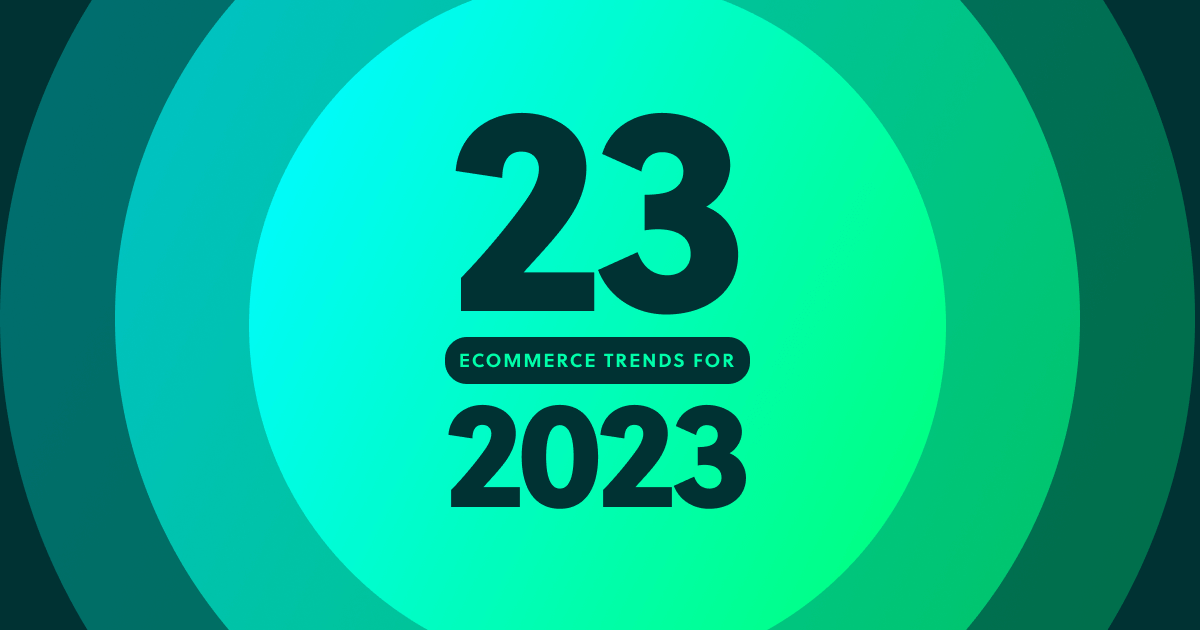
eCommerce is constantly evolving, and brands that want to stay competitive must take the new year by storm. We asked 23 eCommerce experts from brands, agencies, and technology providers to share the eCommerce trends that will define 2023. Whether you’re a seasoned eCommerce pro or just starting out, these insights will help you reach new heights.
1. Brands will launch prepaid subscriptions to boost LTV
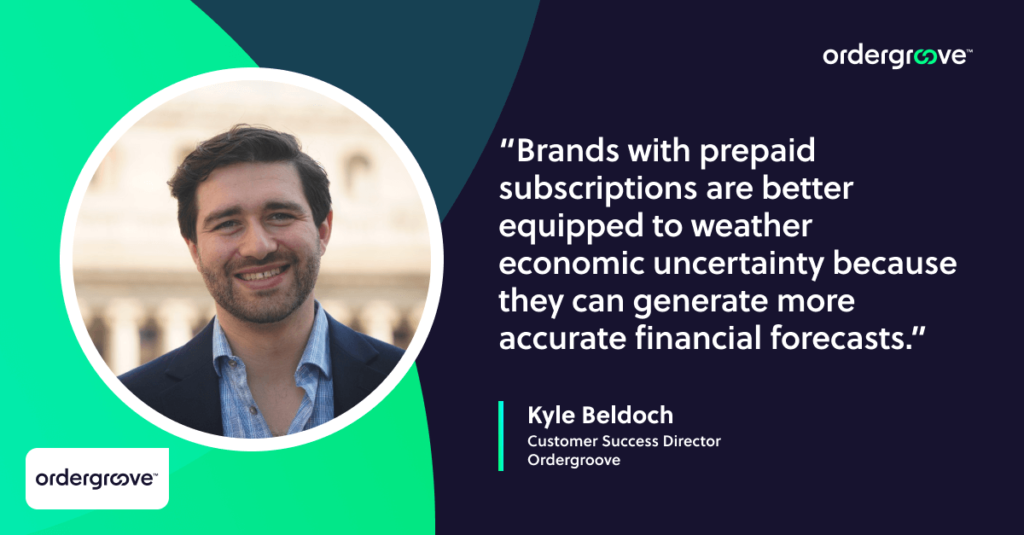
Unpredictable market conditions, greater competition, and skyrocketing customer acquisition costs will drive eCommerce brands and retailers to boost customer lifetime value (LTV). Prepaid subscriptions are the best way to accomplish this.
Prepaid subscriptions offer consumers the ability to commit to longer-term subscriptions. For example, Wrist Mafia lets consumers prepay three or six months in advance for an additional 20% off.
Brands are flocking to prepaid subscriptions because they drive greater LTV – even beyond pay-as-you-go subscriptions. Our data shows that, on average, prepaid subscriptions generate four times the LTV of pay-as-you-go subscriptions.
Another crucial benefit of prepaid subscriptions is that they build business resilience by securing predictable, repeatable revenue. In other words, brands with prepaid subscriptions are better equipped to weather economic uncertainty because they can generate more accurate financial forecasts.
– Kyle Beldoch, Customer Success Director, Ordergroove
2. Customers are going to be pickier about where they spend their money and what they spend it on
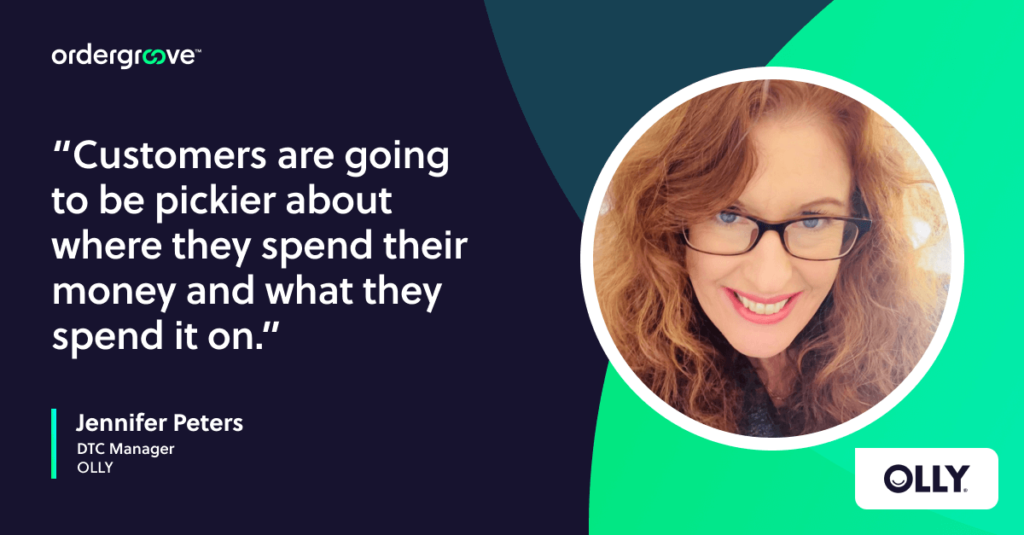
The economy is uncertain, and customers are going to be more discerning than ever with their dollars. Consumer confidence is down, and inflation is up. They are going to be sticking with brands that they trust and cutting spend on personal budget lines that are wants instead of needs.
It will be critical for those of us in eCommerce to offer lots of choices for our customers. On the consumer packaging goods side, subscriptions/recurring orders, twin packs and multipacks, and triggered replenishment of consumables with savings built in will drive average order value and allow customers to choose their own adventure in ways that they feel comfortable with.
– Jennifer Peters, DTC Manager, OLLY
3. Big brands will move to Shopify Plus

The year ahead will see more big-name enterprise brands and businesses migrate from legacy and custom eCommerce platforms to modern Shopify Plus-centric solutions. We’ve seen the likes of Supreme and Glossier do this recently. Mattel and ButcherBox are moving too. Expect more.
Merchants want to get out of the dev ops and maintenance space and focus more talent, time, and resources on easy admin, quickly testing, learning, and growing their eCommerce business.
– Richard Sandor, Chief Strategy Officer, iamota
4. More brands will focus on retention strategies
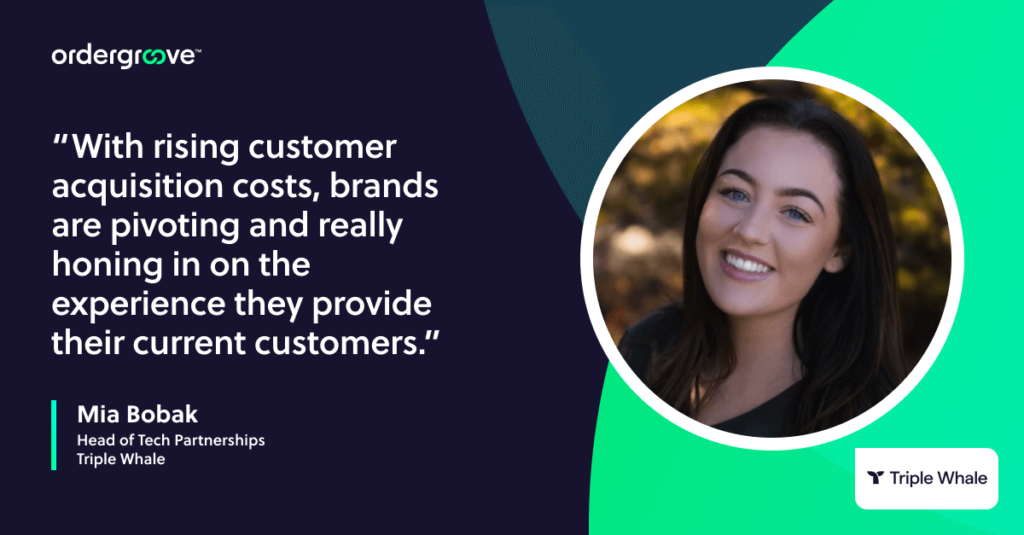
Customer retention strategies will be a big topic of discussion for top direct-to-consumer brands in 2023. With rising customer acquisition costs, brands are pivoting and really honing in on the experience they provide their current customers. We’ll see an increase in brands developing these strategies by launching exclusive customer communities, investing in their customer journey, building loyalty programs, and using data to better understand their customer.
– Mia Bobak, Head of Tech Partnerships, Triple Whale
5. Don’t be an eCommerce index fund
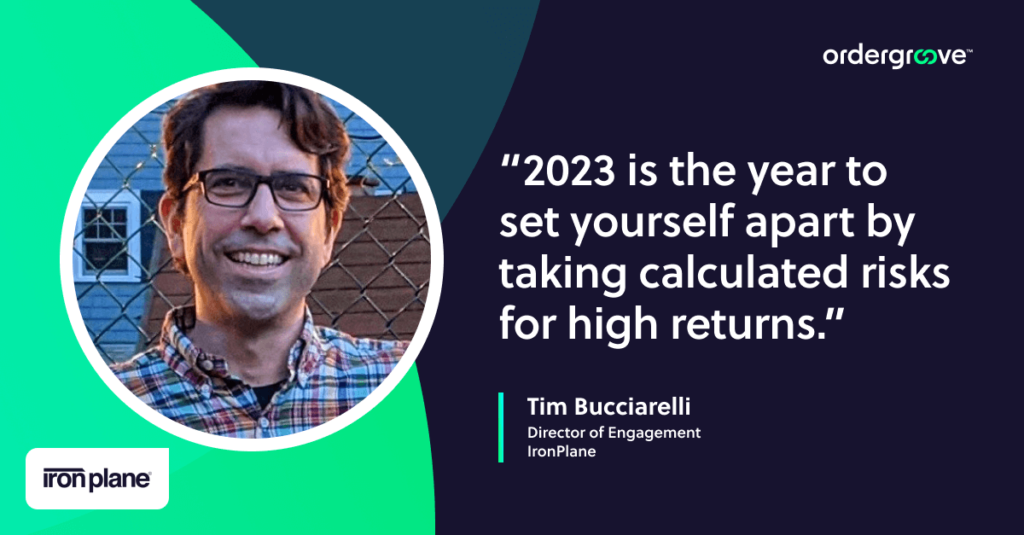
Index funds are safe in a world of economic risk and uncertainty. Playing it safe and hedging your bets for a modicum of return may work well as a long-term investment strategy, but not in today’s eCommerce environment.
The 2020s have been all about the commodification of eCommerce – not only in the products but also in the experience. SaaS-based eCommerce platforms using lookalike design templates are the index funds of the eCommerce world. They help businesses more easily get online with a deep selection of innovative eCommerce functionalities. But in this environment, with these platforms, it is harder and harder to make your brand stand out as memorable.
The alternatives may be risky, and for some, they won’t be feasible. For those willing and able to invest in setting yourself apart from the morass of sameness:
- Consider an eCommerce platform or a headless build allowing greater customization of design, integration, and functionality.
- Invest in well-researched and creative design, copy, and messaging that appeals to your best customers first.
- Buck the trends you see your competitors pursuing and chart your own course.
2023 is the year to set yourself apart by taking calculated risks for high returns. Those who don’t will risk becoming another indistinguishable vendor with middling returns like those of your favorite index fund.
– Tim Bucciarelli, Director of Engagement, IronPlane
6. Brands will cater more to global audiences
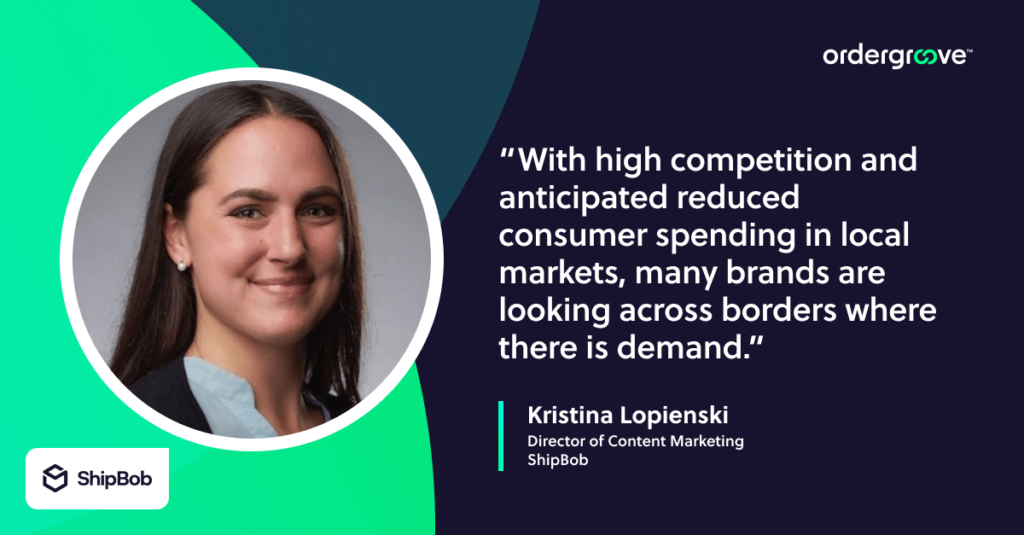
With high competition and anticipated reduced consumer spending in local markets, many brands are looking across borders where there is demand.
Being a global logistics company with more than 40 fulfillment centers on three continents, we’ve seen brands ship more abroad and fulfill domestically to reach more consumers. Leveraging a partner with a global physical presence in other countries and establishing the proper tax and business requirements (as outlined below for several large eCommerce markets) in countries you’re eligible to sell your products can make for an easy transition.
- To sell within the U.S., you need an Employer Identification Number (EIN) and an LLC registration is recommended
- To sell within the U.K., you need unique Value-Added Tax (VAT) and/or Economic Operators Registration and Identification (EORI) registration numbers
- To sell within the E.U., you need unique VAT, EORI, and Union One-Stop Shop (OSS) registration numbers
- To sell in Australia, you need an Australia Business Number (ABN) and Goods and Services Tax (GST) registration
- To sell in Canada, you need to register for your Goods and Services Tax (GST) and Non-Resident Importer (NRI)
– Kristina Lopienski, Director of Content Marketing, ShipBob
7. Create a real connection

As social commerce continues to grow and the omnichannel landscape widens, consumer experience will be of even more importance moving through 2023. Synergy across channels and brand experiences, wherever they might be had, as well as increased personalization, will be necessary for customer retention. With acquisition costs only growing, focusing on strengthening the relationship between ourselves and our consumers on a one-to-one level, from how they shop with us to the quality of communication and care post-purchase, will be the differentiator. When you strip it all down, it’s honestly about creating a real connection.
– Kelly Spencer, Retention Marketing Manager, Death Wish Coffee
8. Data-driven insights will become a premium product

Google Analytics is used by about 55% of websites. Later this year, Google Universal Analytics (UA) and Google 360 users will be required to upgrade to Google Analytics 4 (GA4).
Switching from UA to GA4 may sound simple, like running an update, but GA4 is not an update—it’s an entirely new architecture. When transitioning to GA4, teams will have to figure out which events are important, develop a strategy for organizing them, and then re-tag everything on their site. They’ll also have to preserve historic data, as access to UA will be sunsetted.
The truth is cross-platform implementation for enterprise and eCommerce businesses is going to be very costly and time-consuming. Several large institutions have quoted anywhere between one to three years for replicating what they’ve built in Google Analytics in order to migrate to GA4.
GA4 upgrades will have high costs and be complex to implement. Many smaller eCommerce companies will have a hard time migrating from UA to GA4 and will likely be looking for more usable analytics platforms to use.
– Robbin Farrell, VP Strategy & Design, Melon/DEPTⓇ
9. Invest in brand marketing and your user experience
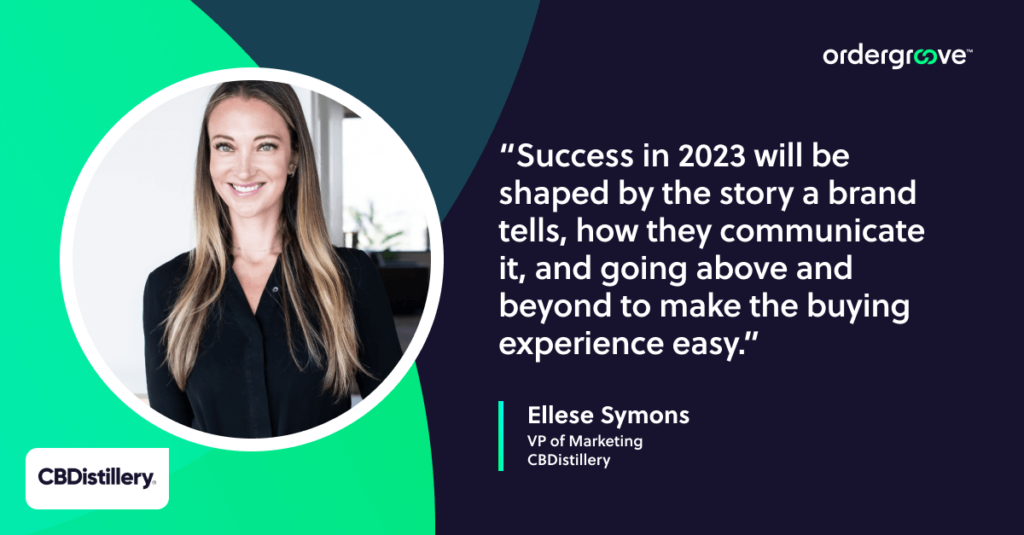
More than ever, 2023 is going to be the year where investing in brand marketing and the user experience is going to be essential to a company’s success. With a year of projected economic uncertainty, looming inflation, and increased competition for consumers’ dollars, the brands that will win will be those that do more than just show up in conventional marketing channels. Success in 2023 will be shaped by the story a brand tells, how they communicate it, and going above and beyond to make the buying experience easy for the consumer (i.e., a great subscription program).
– Ellese Symons, VP of Marketing, CBDistillery
10. Nail your subscription fundamentals
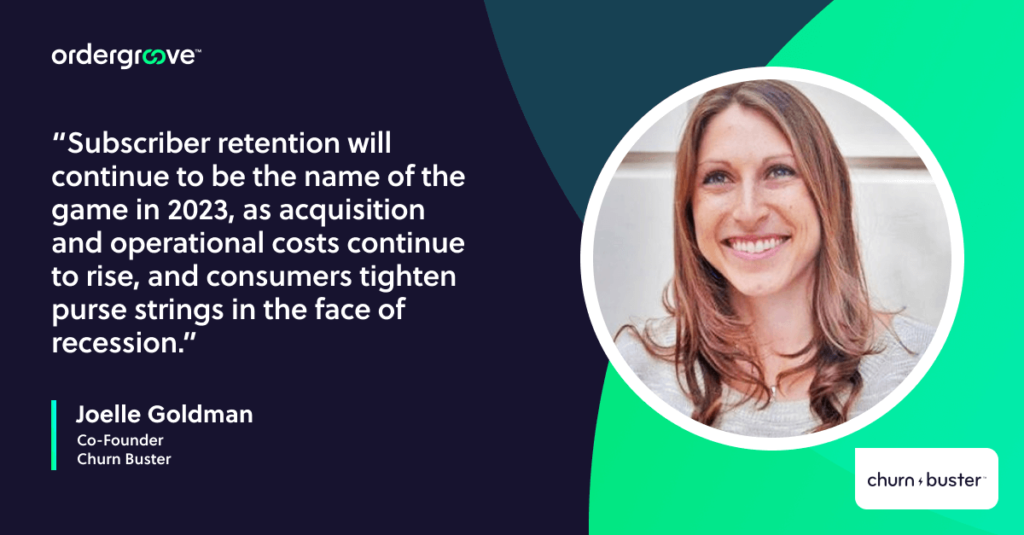
Subscriber retention will continue to be the name of the game in 2023, as acquisition and operational costs continue to rise and consumers tighten purse strings in the face of recession.
One of the lowest-effort, highest-impact places to invest effort is by revisiting the foundational systems in place for subscriber renewal and transactional experiences. Sound boring? It’s really not!
Every time a subscriber is set to renew, there’s a lot that can go wrong or create friction. Making sure these touchpoints are easy and delightful for your subscribers – along with ensuring that mistakes or missed opportunities to save a subscriber aren’t happening on repeat (at scale) – is critically fundamental to any viable retention strategy. In 2023, there’s no reason companies should be churning customers for easily preventable reasons.
My advice: don’t underestimate the impact of nailing the fundamentals.
– Joelle Goldman, Co-Founder, Churn Buster
11. More brands will use video commerce
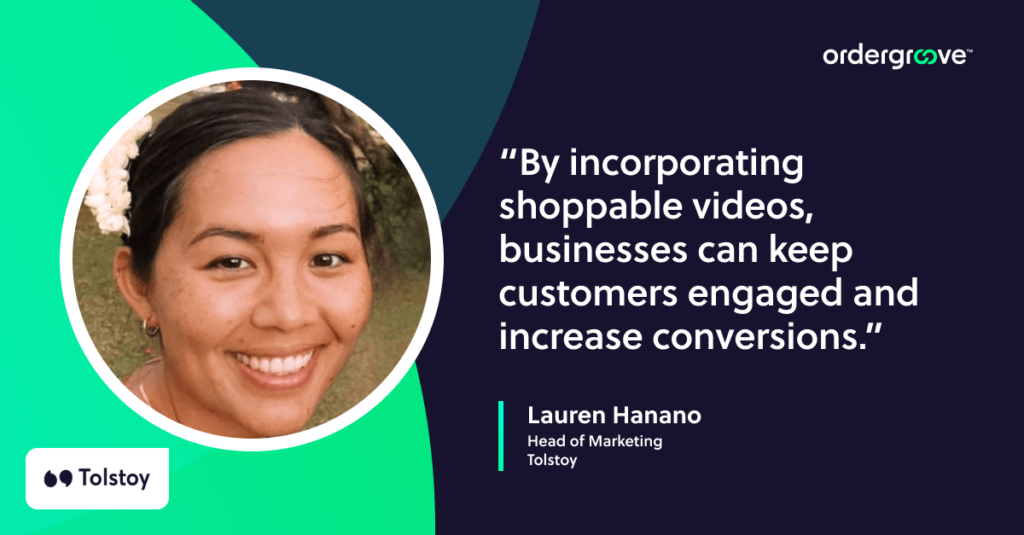
Video commerce is becoming an increasingly popular trend in eCommerce as it allows for a more engaging and interactive shopping experience for customers. By incorporating shoppable videos, businesses can keep customers engaged and increase conversions. It’s important for eCommerce brands to consider using a platform that can create and host interactive and shoppable videos without slowing down site speed in order to stay ahead of the trend towards video and social commerce.
– Lauren Hanano, Head of Marketing, Tolstoy
12. Make your store memorable
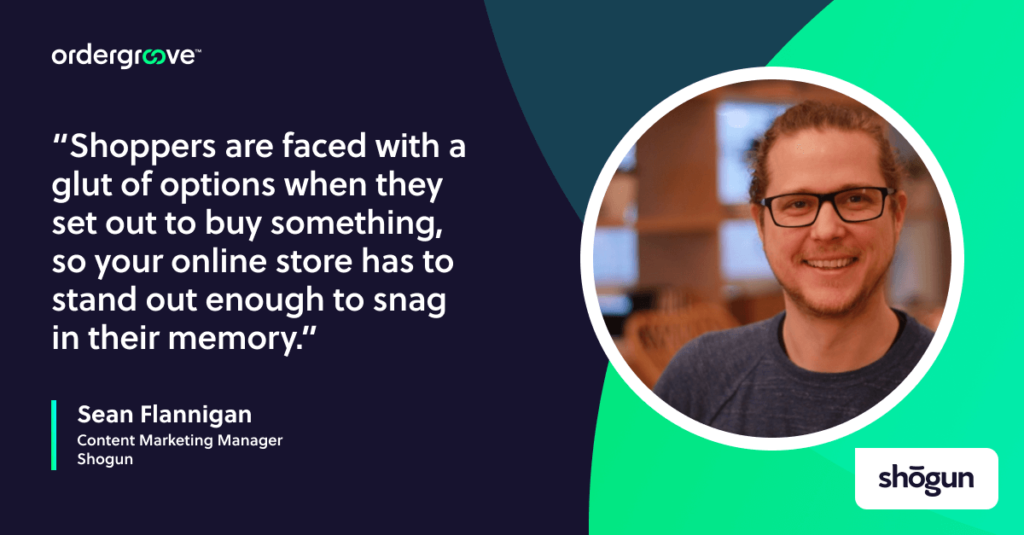
Shoppers are faced with a glut of options when they set out to buy something, so your online store has to stand out enough to snag in their memory. If your store looks like every other store, they’ll have no reason to come back. But, if you’ve broken out of the pre-built theme system to create truly custom shopping experiences, you’ll be easily top of mind when they go to click “Buy Now.”
– Sean Flannigan, Content Marketing Manager, Shogun
13. Optimize your customer experience to grow
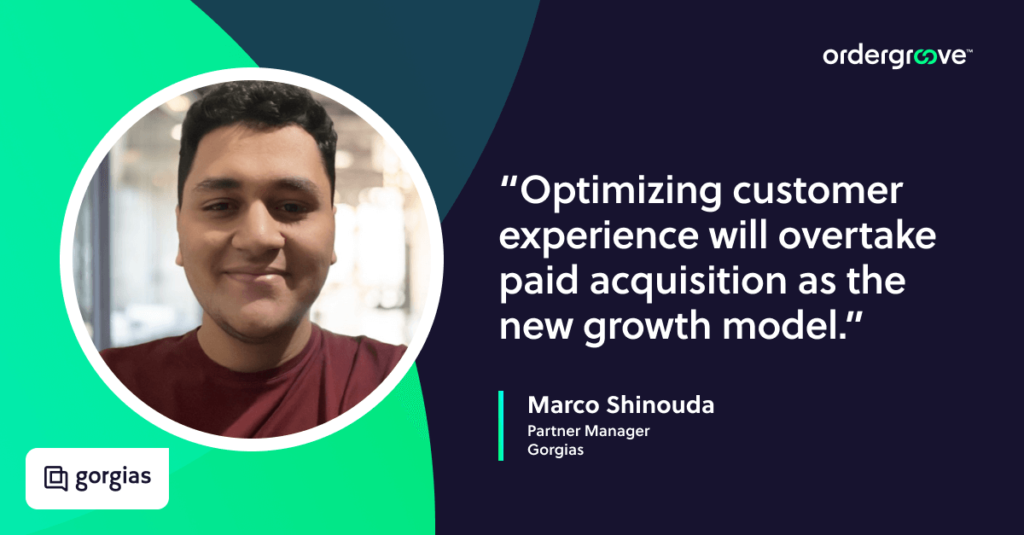
Optimizing customer experience (CX) will overtake paid acquisition as the new growth model as brands shift to profitable and sustainable growth.
Digital advertising costs have continued to increase to the point where growing merchants are being priced out of ad platforms. For brands to continue to grow, focusing on optimizing the customer experience will transition from “we should do it” to “we must.”
As revenue becomes harder to squeeze from paid channels, brands will rely more heavily on improving their sales performance from their owned channels. Brands will dive further into their customer data to build more robust and segmented automations across email, SMS, and direct mail in order to drive more revenue from customers already in their lists.
– Marco Shinouda, Partner Manager, Gorgias
14. Composable commerce will deliver efficiency

The state of the economy is going to force companies to make financial decisions to ensure they are able to weather the storm. One major factor is evaluating their tech stack for efficiency/price and ensuring their SaaS providers are fluid enough to help them scale. Composable commerce will play a big role in this, and we will start to see tech-heavy, expensive solutions be phased out.
– Veronica Gelman, Director of Client Services, Avex
15. Focus on word-of-mouth marketing
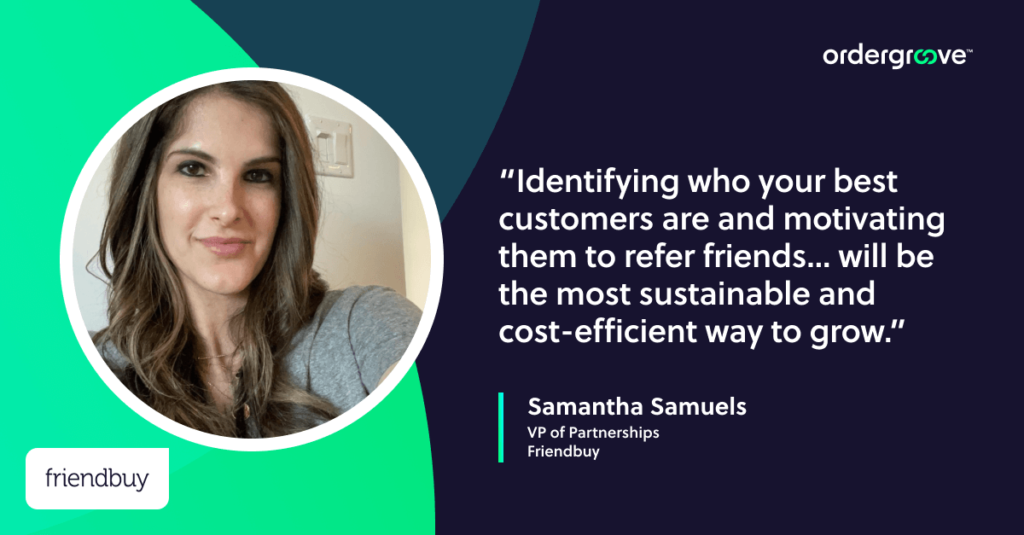
Identifying who your best customers are and motivating them to refer friends, or take whichever actions are most valuable to your business, will be the most sustainable and cost-efficient way to grow.
For brands today, paid ads can be expensive and unpredictable. As people start cutting back on spending, it’s a hard sell to convince a customer to convert with a brand they might not have tried before. That’s where word-of-mouth and loyalty can be really powerful. Having your already loyal customers recommend your brand to their friends and family is a sustainable and cost-efficient way to grow.
– Samantha Samuels, VP of Partnerships, Friendbuy
16. Leverage zero- and first-party data

Zero- and first-party data will only become more important. It’s already been a buzzword/trend in 2022 but will become even more of a focal point in 2023. Businesses who haven’t made it a priority will put a greater emphasis on collecting it, while those who have been will focus on gathering more granular data points and organizing datasets to be leveraged to the fullest extent.
Expanding from the initial lead capture and preferences collection that many brands have adopted, we foresee more middle-of-the-funnel and bottom-of-the-funnel collection as well for zero/first-party data. Your customers are your best resource – more than 50% of them are comfortable exchanging personal information for a more personalized experience. One caveat to this is collecting more data and then not using it to provide customers with value. That backfires more than not having the data in the first place. Get the data you need, build the personalized experiences that they want, and you’ll see strong growth this year!
– Kathryn Browning, Senior Marketing Manager, Justuno
17. Implement voice commerce
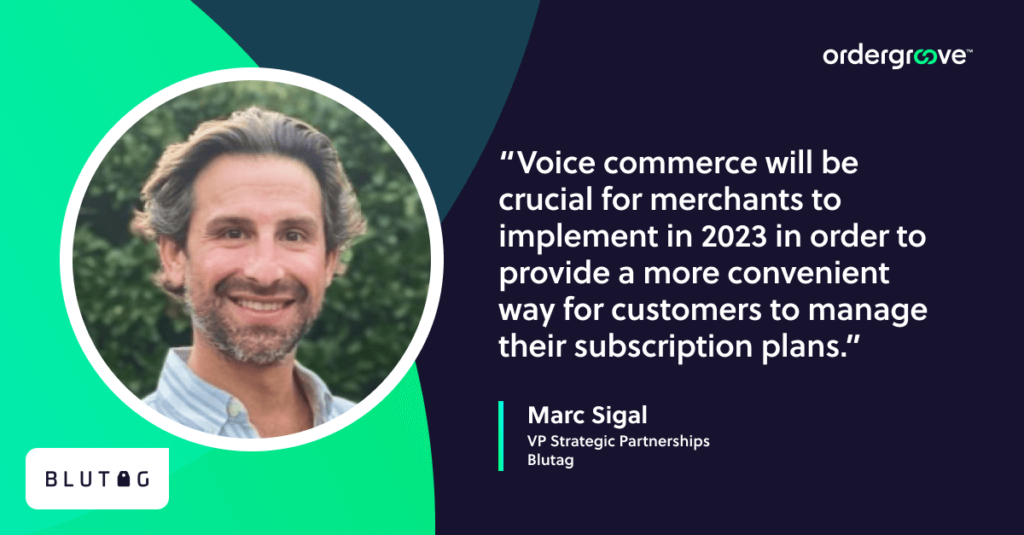
Voice commerce will be crucial for merchants to implement in 2023 in order to provide a more convenient way for customers to manage their subscription plans. By giving customers the ability to check the status of their delivery/subscription, skip a delivery, and change delivery frequency, all through simple voice commands, merchants have seen a significant reduction in subscription churn. Voice commerce also builds a stronger relationship between merchants and customers, leading to higher customer loyalty and retention.
– Marc Sigal, VP Partnerships, Blutag
18. Brands will leverage QR codes to retain customers and get incremental orders

Brands need to meet their customers where they are. That means direct-to-consumer, Amazon, retail, and social media. We will see a convergence of channels. Brands will evolve their experience to connect digital and physical to create a connected experience across all of their channels with QR codes. QR codes will also be a brand activation point to deliver differentiation and brand storytelling.
– Charlotte Thorndike, Partnership Lead, Brij
19. Personalization is critical to driving customer loyalty – especially post-purchase
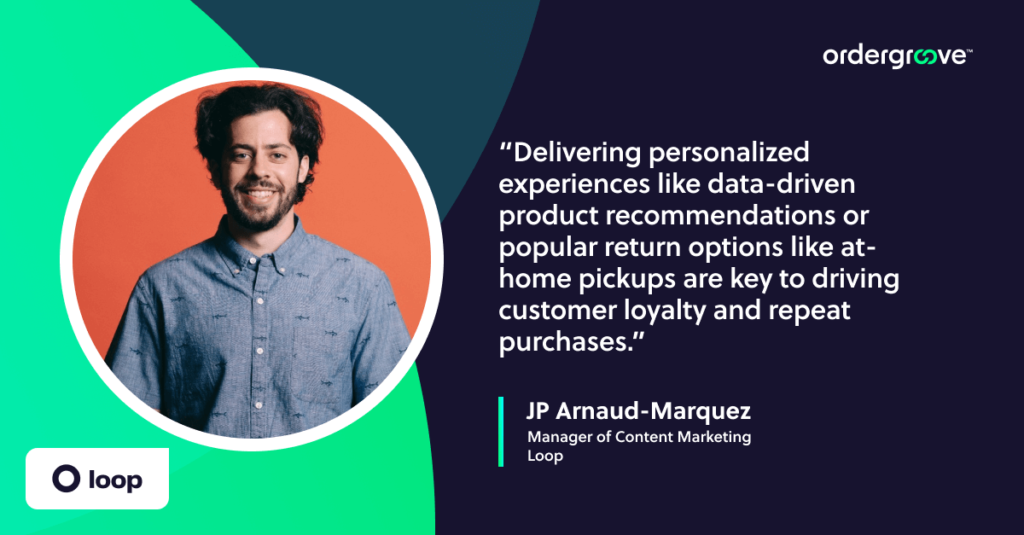
The best-in-class eCommerce merchants are delivering personalization at scale.
Personalization doesn’t just pertain to marketing segmentation or pre-purchase. Personalization pertains to the entire online shopper experience. Delivering personalized experiences like data-driven product recommendations or popular return options like at-home pickups are key to driving customer loyalty and repeat purchases.
– JP Arnaud-Marquez, Manager of Content Marketing, Loop
20. Payments, payments, payments
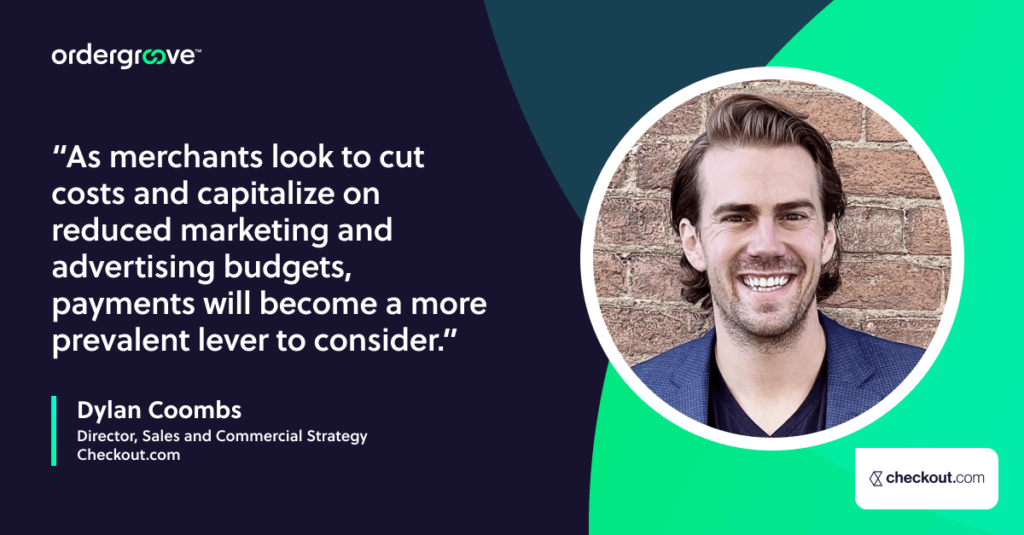
As merchants look to cut costs and capitalize on reduced marketing and advertising budgets, payments will become a more prevalent lever to consider. Payments is oft viewed as a necessary commodity, but savvy leaders will reconsider their payments infrastructure and its impact on business operations as the market turns.
Merchants cannot afford to lose customers at the checkout and so eliminating fraud and approving all valid transactions will see more focus.
– Dylan Coombs, Director, Sales and Commercial Strategy, Checkout.com
21. Expect an increase in single SKU brands
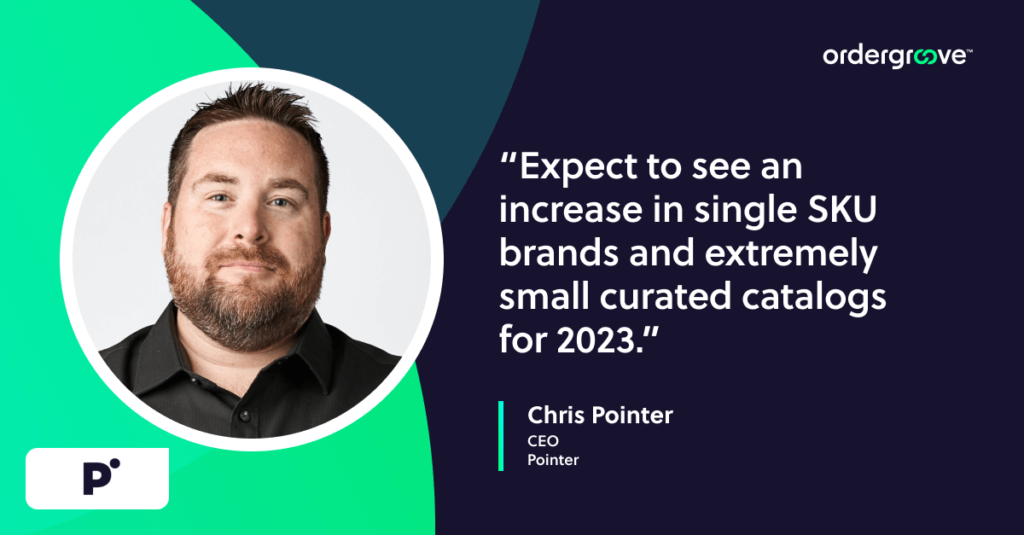
Single SKU brands are selling one product and ensuring they do it extremely well. One of the key reasons for the trend of single SKU brands is the increased competition in eCommerce and the need to stand out in a crowded market. By focusing on one product, these brands can differentiate themselves and become the go-to brand for that specific product. Effective tactics leveraged to market single SKU brands include limited drops, countdown timers, personalized product options, pre-orders, etc. Expect to see an increase in single SKU brands and extremely small curated catalogs for 2023!
– Chris Pointer, CEO, Pointer
22. Shift your focus to loyal customers
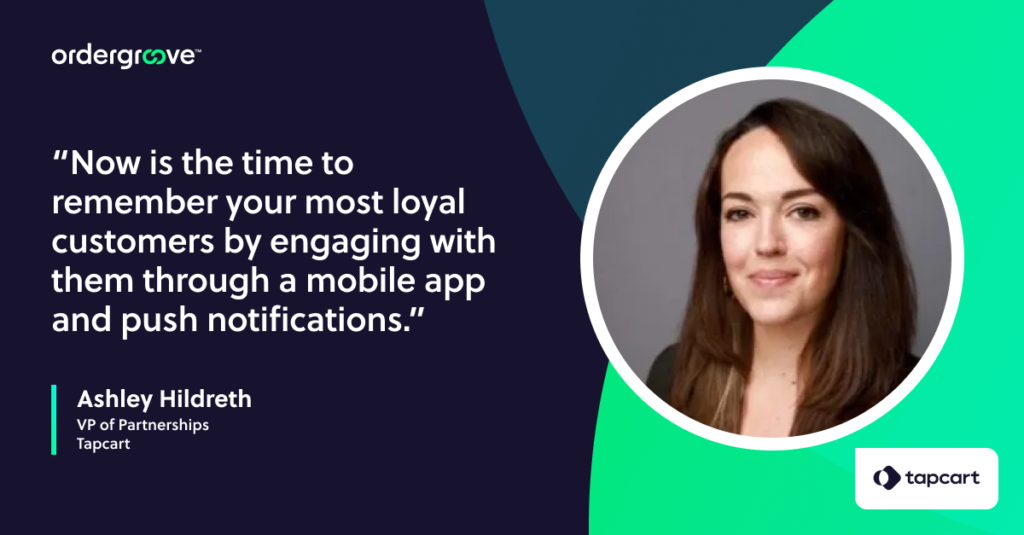
You’ve spent so many resources on acquiring and nurturing your new customers. Now is the time to remember your most loyal customers by engaging with them through a mobile app and push notifications. A mobile app is one of the most valuable pieces of real estate you can own on your customer’s phone — given studies show we look at our phone once every four minutes! Build the retention and engagement channel with a proven 40% return on investment and give your loyal customers the brand story they’re looking to share with a mobile app.
– Ashley Hildreth, VP of Partnerships, Tapcart
23. Greater focus on collaboration
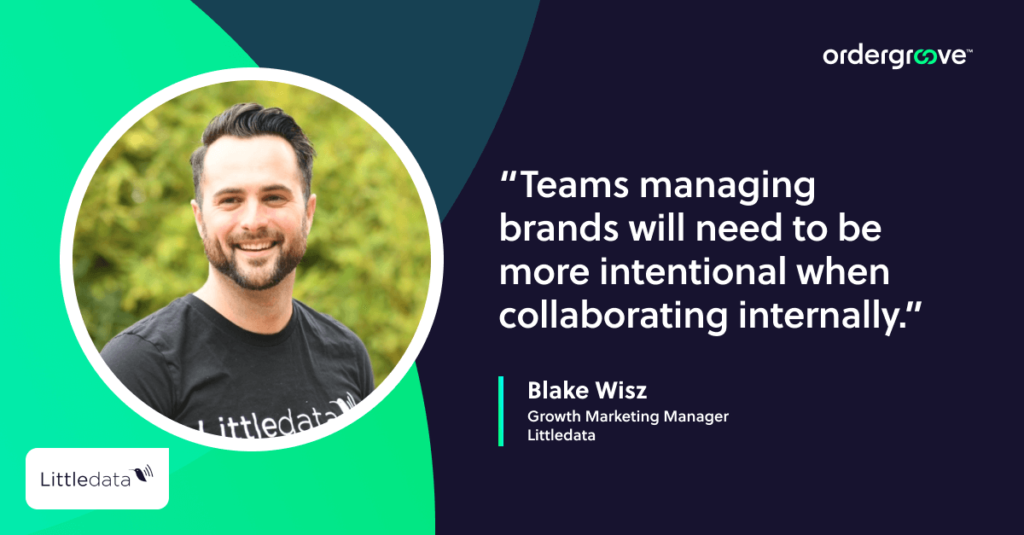
In 2023, teams managing brands will need to be more intentional when collaborating internally. For example, subscription-driven brands will need to zero in on their customers with the highest customer lifetime value and align goals to reach these precious customers from every role or department across the business. Marketing, sales, operations, you name it, all play a role in lifting retention.
– Blake Wisz, Growth Marketing Manager, Littledata
Bonus. Brands will build meaningful relationships with their customers

In 2023, it will be critical to show your customers how important they are to your business, whether it be through gifts, discounts, or exclusive content. Creating predictable revenue streams for businesses of all sizes will be crucial to execute this year (i.e., subscriptions and prepaid offers).
– Balraj Jutla, Co-Founder, Lost Craft / Craft 360 Beverages & Agency Partnerships at Ordergroove
Each month, Ordergroove asks experts to share their opinions on eCommerce, Relationship Commerce, or subscriptions. If you have a question for our experts or want to be considered for inclusion in future blog posts, email us at hi@ordergroove.com.